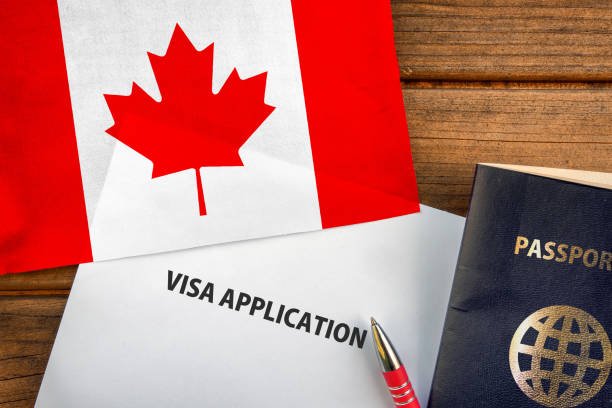Advertisement
Being forced to leave one’s home country has been one of the most difficult experiences anyone can face. Political conflicts, persecution, and threats to personal safety have made millions of individuals seek protection abroad. In the United States, legal frameworks have been put in place to protect such individuals through asylum and refugee status programs.
This guide has been prepared to explain the requirements, process, rights, challenges, and tips for successfully applying for asylum or refugee status in the U.S. It has been written in a clear, step-by-step format so that readers can understand how protection can be sought under American law, what evidence is required, and what to expect after approval.
Advertisement
The Asylum and Refugee Visa Status
Definition of Refugee
A refugee has been defined under U.S. law as someone outside of their country of nationality who cannot return due to a well-founded fear of persecution. The persecution must have been based on one or more of five protected grounds:
- Race
- Religion
- Nationality
- Membership in a particular social group
- Political opinion
A refugee must be located outside the United States when applying and is usually identified through the U.S. Refugee Admissions Program (USRAP) with the help of the United Nations High Commissioner for Refugees (UNHCR) or a U.S. embassy referral.
Definition of Asylum
Asylum has been similar in definition to refugee status but is applied for inside the United States or at a port of entry (e.g., an airport or land border). Applicants for asylum must also prove fear of persecution based on the same five grounds.
Two processes have been available:
- Affirmative Asylum – filed voluntarily while the applicant is not in removal proceedings.
- Defensive Asylum – requested while facing deportation, as a defense against removal.
Key Differences Between Refugee and Asylum
While both statuses provide protection, they have differed in location and process:
- Refugees apply from abroad, while asylees apply from within the U.S.
- Refugees have been counted under an annual quota determined by the U.S. President, whereas asylum does not have a numerical limit.
- Refugees are processed through USRAP, while asylum cases are processed by USCIS (United States Citizenship and Immigration Services) or EOIR (Executive Office for Immigration Review).
Eligibility Requirements
Grounds for Protection
Applicants must show credible fear of persecution. A well-founded fear has been proven through personal testimony, documented evidence, and reports of country conditions.
The persecution must be linked to one of the five protected grounds mentioned earlier. This has meant that general violence or poverty has not usually qualified unless a link to one of the grounds could be demonstrated (e.g., persecution due to belonging to a targeted ethnic group).
Inadmissibility or Disqualification Factors
Not everyone has been eligible for protection. Applications have been denied when applicants have:
- Been convicted of a serious crime.
- Posed security threats or had links to terrorism.
- Firmly resettled in another safe country before seeking U.S. protection.
- Filed frivolous asylum applications (which can permanently bar future applications).
Refugee Application Process
Registration with UNHCR or U.S. Resettlement Program
The first step for most refugees has been registration with UNHCR or a U.S. embassy referral. UNHCR interviews the applicant, verifies eligibility, and refers the case to USRAP if appropriate.
Refugee Interview and Screening
Once referred, applicants undergo multiple layers of security screening:
- Biographic and biometric data checks
- FBI, DHS, and intelligence agency vetting
- Medical screening to ensure admissibility
Interviews are then scheduled with USCIS refugee officers who determine eligibility.
Approval and Resettlement
If approved, travel arrangements have been coordinated by the International Organization for Migration (IOM). Refugees have been provided cultural orientation sessions to prepare them for life in the U.S. Upon arrival, resettlement agencies assist with housing, job placement, and language training.
Asylum Application Process
Affirmative Asylum Process
Applicants file Form I-589, Application for Asylum and for Withholding of Removal, within one year of entering the U.S. Exceptions to this deadline may be granted if extraordinary circumstances prevented timely filing.
USCIS then schedules biometrics appointments and an asylum interview, usually within several months. During the interview, the applicant explains their story under oath and presents evidence. A decision is typically made within 180 days unless delays occur.
Defensive Asylum Process
Defensive asylum is requested when a person is already in removal proceedings. Instead of a USCIS officer, an immigration judge hears the case. The applicant must present testimony and evidence while the Department of Homeland Security (DHS) attorney cross-examines them. If approved, removal proceedings are terminated and asylum is granted.

Required Documents and Evidence
Personal Identification and Travel Documents
Applicants must provide all available identification documents, including passports, birth certificates, and prior visas.
Proof of Persecution
Strong evidence has been critical in establishing eligibility:
- Affidavits from witnesses or family
- Police reports, court records, or arrest warrants
- Medical reports documenting injuries
- Country condition reports showing ongoing persecution
Supporting Forms
The main forms include:
- I-589 for asylum
- DS-260 for refugee immigrant visas
- Supplementary forms for dependents
Rights and Benefits of Refugee or Asylee Status
Work Authorization
Refugees automatically receive work authorization upon arrival. Asylum seekers may apply for an Employment Authorization Document (EAD) 150 days after filing Form I-589.
Access to Social Services
Both refugees and asylees have been eligible for public benefits such as:
- Refugee Cash Assistance (RCA)
- Refugee Medical Assistance (RMA)
- English language classes and vocational training
Pathway to Permanent Residency
After one year, both refugees and asylees must apply for a green card (lawful permanent residency). After five years of LPR status, they may apply for naturalization and become U.S. citizens.
Challenges and Common Mistakes
Late Filing or Missed Deadlines
Failure to meet the one-year filing deadline for asylum has been a common reason for denial. Applicants have been advised to file as soon as possible and keep records of entry dates.
Insufficient Evidence
Applications without credible supporting documents often fail. Detailed written statements and corroborating evidence have been strongly recommended.
Legal Representation Issues
Self-represented applicants have historically had lower approval rates compared to those with legal counsel. Seeking free or low-cost immigration legal aid has been encouraged.
Recent Policy Changes and Trends
Shifts in Refugee Admission Numbers
The refugee admissions ceiling has been raised in 2025 to reflect global humanitarian needs, but the exact numbers may fluctuate annually based on U.S. government policy.
Changes to Asylum Rules
Recent changes have affected credible fear interviews and expedited removal processes, making legal assistance even more important.
Tips for a Strong Application
Legal Preparation
Working with experienced immigration attorneys or accredited representatives has been encouraged to improve the chances of success.
Mental Health Considerations
Psychological evaluations have been useful in demonstrating the effects of trauma and strengthening asylum claims.
Community and Sponsor Support
Building relationships with resettlement agencies, churches, or community groups has been helpful for smoother integration after arrival.
Refugee vs Asylum – A close Comparison.
| Factor | Refugee Status | Asylum Status |
|---|---|---|
| Location | Applied for outside the U.S. | Applied for inside the U.S. or at border |
| Process | UNHCR referral + USRAP interview | USCIS interview or immigration court |
| Annual Cap | Limited by yearly quota | No numerical limit |
| Processing Time | 12–24 months on average | 6 months to several years |
| Travel | Arranged by IOM | Applicant arranges own travel |
| Work Rights | Automatic upon arrival | Eligible after 150 days |
| Green Card | After 1 year | After 1 year |
Understanding the Humanitarian Context
Global Perspective on Refugee Protection
The refugee visa program in the USA has been developed as part of international commitments under the 1951 Refugee Convention and its 1967 Protocol. The objective is to offer protection to individuals who cannot return to their home countries due to persecution or fear of harm.
Role of the U.S. Government and International Organizations
The U.S. Department of State collaborates with the UNHCR and international resettlement agencies to identify eligible refugees. This collaborative approach ensures that vulnerable groups — including women, children, and persecuted minorities are prioritized for safe relocation.
Detailed Eligibility Requirements
Grounds for Refugee Status
Eligibility for refugee or asylum status is determined based on:
-
Well-Founded Fear of Persecution – Applicants must demonstrate a real, credible threat.
-
Membership in a Protected Group – Race, religion, nationality, political opinion, or social group affiliation.
-
Inability to Seek Protection at Home – Evidence must be presented that local authorities cannot provide safety.
Exclusionary Criteria
Applications may be denied if the applicant:
-
Has been involved in persecution or serious crimes.
-
Has firm resettlement in another safe country before reaching the USA.
-
Poses a security threat or is considered a danger to the public.
UK, US, and Canada Refugee Pathways – A Quick Comparison
| Country | Strength of Program | Processing Time | Benefits After Arrival |
|---|---|---|---|
| USA | Strong vetting, but largest resettlement program globally | 12–24 months | Work authorization, path to Green Card |
| UK | Focus on vulnerable groups (e.g., Syrians, Afghans) | 6–12 months | Access to public funds, housing support |
| Canada | Private Sponsorship Program popular worldwide | 12–18 months | Immediate PR status, healthcare, work rights |
FAQs
- Can refugees bring family members? Yes, spouses and unmarried children under 21 may be included or follow-to-join later.
- What happens if asylum is denied? Applicants may appeal or face removal, depending on case specifics.
- Can I work while waiting for asylum approval? Yes, but only after applying for and receiving an EAD.
- How long does refugee resettlement take? Typically 12–24 months, depending on security clearances and quotas.
- Can refugees travel back to their home country? Generally not recommended, as it may affect future immigration status.

Conclusion
Refugee and asylum programs have been critical lifelines for individuals fleeing danger and persecution. By understanding the eligibility criteria, gathering proper documentation, and seeking professional guidance, applicants have been able to navigate the complex process successfully. Despite challenges and long processing times, these pathways remain vital in offering protection and a chance for a new life in the United States.


















